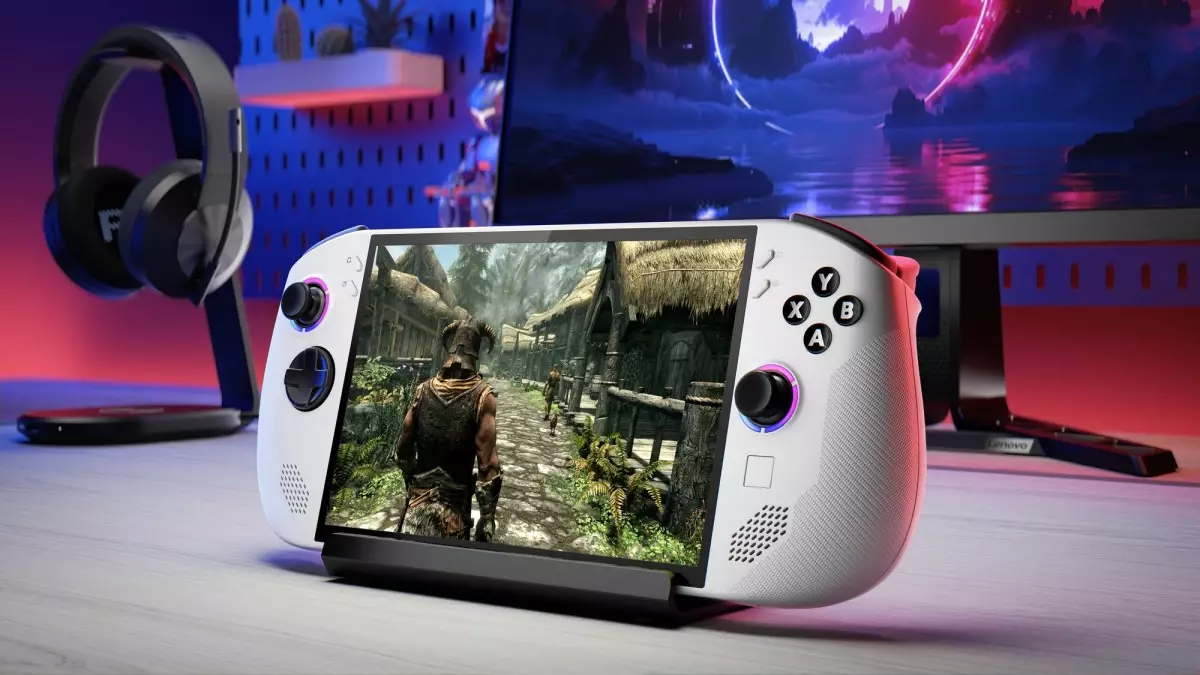The gaming industry is witnessing a pivotal transformation as SteamOS emerges as a legitimate contender to Windows for handheld gaming devices. Thanks to Valve’s strategic push with the Steam Deck, the gaming landscape is experiencing a shift that is not only redefining gaming consoles but also inviting third-party manufacturers into the fold. One of the most notable contributors to this evolution is Lenovo, which recently showcased its Legion Go S at CES 2025. This article delves into the implications of the Legion Go S, its design, specifications, and the broader context of SteamOS’s growth in the handheld gaming market.
Lenovo’s Bold Move in Handheld Gaming
Lenovo’s introduction of the Legion Go S marks a significant entry into the competitive realm of handheld gaming. The new device adopts a more conventional form factor, featuring an expansive 8-inch display. This is a departure from the original Legion Go, which sported detachable controllers and a kickstand. Instead, Lenovo has streamlined the design to provide a better grip and ease of use. The decision to phase out detachable components suggests an emphasis on durability and user experience, crucial factors in the handheld segment where portability often compromises build quality.
What sets the Legion Go S apart is its array of customizable options, particularly concerning the choice of AMD chipsets. The introduction of the Ryzen Z2 Go for budget-conscious gamers alongside the more powerful Ryzen Z1 Extreme allows consumers to select a model that best suits their gaming preferences and budget. This flexibility is a strategic move to attract a broader audience, especially those who might be hesitant to invest heavily in gaming hardware.
As Lenovo prepares to launch the Legion Go S, one of the most compelling features is the option for customers to choose between SteamOS and Windows 11. The allure of SteamOS lies in its optimization for gaming, providing an interface designed to enhance the overall user experience. The arguments for SteamOS position it as the ideal operating system for handheld devices: it offers seamless sleep/wake functionality, an intuitive layout, and optimized support for titles in the Steam ecosystem.
On the other hand, Windows 11 may appeal to more traditional gamers who are loyal to specific platforms like Xbox Game Pass or who rely on software with Windows-exclusive anti-cheat mechanisms. This duality in operating systems acknowledges the varied preferences within the gaming community and ensures that Lenovo can cater to both casual and hardcore gamers effectively.
The specifications of the Legion Go S further underscore its ambition to compete with established handhelds. The 8-inch display boasts a 16:10 aspect ratio and a high resolution of up to 1920×1200. Coupled with a variable refresh rate of 120Hz, these features promise a fluid and visually captivating gaming experience. The device also comes equipped with a solid battery life, courtesy of its 55Wh power pack, and versatility through two USB 4 ports and a microSD slot for expanded storage options.
Weighing in at 730g (1.61 pounds), the Legion Go S strikes a balance between portability and performance. The inclusion of a touchpad, albeit small, indicates Lenovo’s commitment to providing an adequate desktop navigation tool—a feature often overlooked in handheld devices.
The landscape of handheld gaming is set to evolve further, with Valve collaborating closely with Lenovo to refine SteamOS for the Legion Go S. This partnership highlights Valve’s long-term ambition to foster the growth of the Steam ecosystem instead of solely competing with established console manufacturers. As more companies join the fray, the competition is bound to enhance the gaming experience offered on handheld devices, potentially leading to long-awaited advancements in hardware capabilities and software integration.
Lenovo’s announcement of an updated Legion Go and an early prototype of the Legion Go 2 demonstrates a commitment to innovation and customer satisfaction within the handheld arena. It’s evident that, as these companies invest in their gaming platforms, the overall quality and accessibility of portable gaming devices will continue to improve.
The release of Lenovo’s Legion Go S is emblematic of the growing viability of SteamOS in the handheld gaming market. With solid performance specifications, the flexibility of operating systems, and a collaborative effort with Valve, Lenovo is poised to capture the attention of gamers looking for alternatives to traditional consoles. As we look forward to future developments, it’s clear that the gaming landscape is set for exciting transformations that promise to redefine how we engage with our favorite titles on the go.

